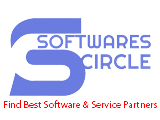Rich user interfaces (UI) refer to graphical user interfaces that provide an engaging and interactive user experience with a wide range of visual and interactive elements, such as animations, transitions, multimedia, and other features that enhance the user experience. Rich user interfaces can be found in a variety of software applications, including web applications, mobile apps, and desktop applications.
Here Are Some Common Features of Rich User Interfaces
Interactive Elements
Rich user interfaces allow users to interact with the application through various elements such as buttons, sliders, dropdown menus, checkboxes, and radio buttons.
Animations and transitions
Animations and transitions provide visual feedback to the user and make the interface more engaging and interactive. Examples include hover effects, scrolling animations, and page transitions.
Multimedia
Rich user interfaces may incorporate multimedia elements such as images, videos, and audio files to enhance the user experience.
Connect with SoftwaresCircle and Increase Your Business Online Visibility to Millions of Users
Get ListedResponsive design
Responsive design allows the UI to adapt to different screen sizes and resolutions, providing an optimal viewing experience across various devices.
Personalization
Rich user interfaces may allow users to customize the interface according to their preferences, such as changing the color scheme, font size, or layout.
Gestures
Gestures such as pinch-to-zoom, swiping, and tapping can make the interface more intuitive and user-friendly.
Rich user interfaces are important for software applications because they can help to create a more engaging and satisfying user experience. By providing a visually appealing and interactive interface, applications can help to increase user engagement, retention, and satisfaction. Developers can use various tools and technologies to create rich user interfaces, such as CSS, JavaScript, and UI frameworks like Bootstrap, Material Design, and Foundation.
